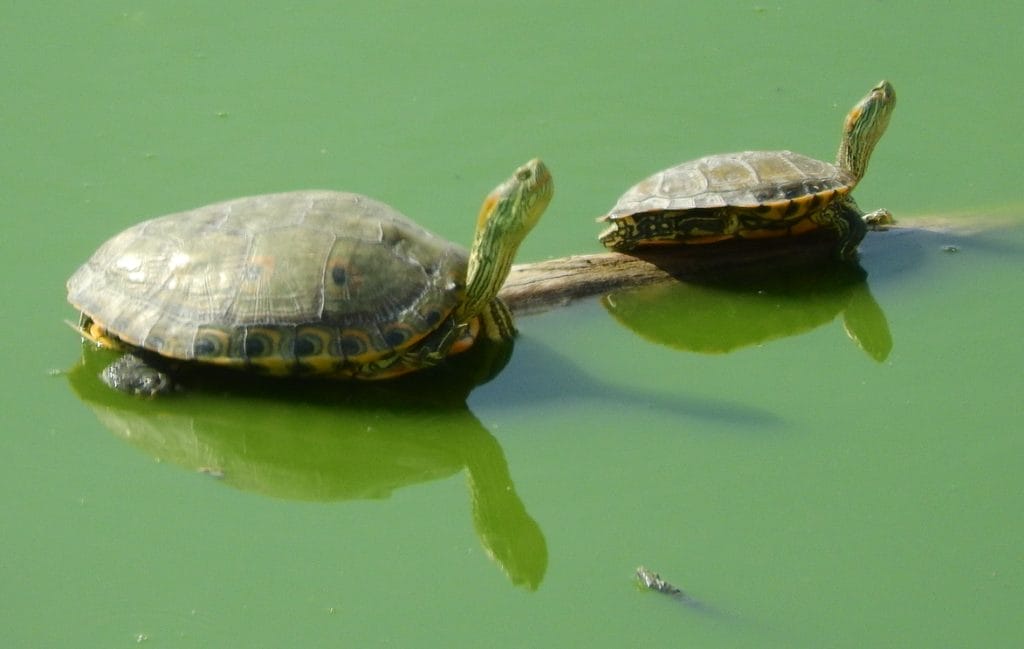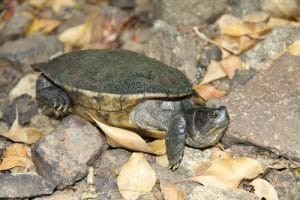Trachemys hartwegi (Nazas Slider)
Home > Turtle Database > Trachemys hartwegi (Nazas Slider)

The Nazas Slider (Trachemys hartwegi) is a freshwater turtle species native to northern Mexico. It was once grouped under Trachemys gaigeae but is now recognized as its own species. This turtle is mostly found along the Nazas River and is known for its olive-green shell with light markings.
Native Turtle Species Map – Find Turtles by Region
Scientific Classification
Kingdom: Animalia
Phylum: Chordata
Class: Reptilia
Order: Testudines
Family: Emydidae
Genus: Trachemys
Species: Trachemys hartwegi
Common Names
Nazas Slider
Nazas River Slider
This Hilarious Turtle Book Might Know Your Pet Better Than You Do
Let’s be real—most turtle care guides feel like reading a textbook written by a sleep-deprived zookeeper.
This one’s not that.
Told from the snarky point of view of a grumpy, judgmental turtle, 21 Turtle Truths You’ll Never Read in a Care Guide is packed with sarcasm, sass, and surprisingly useful insights.
And hey—you don’t have to commit to the whole thing just yet.
Grab 2 free truths from the ebook and get a taste of what your turtle really thinks about your setup, your food choices, and that weird plastic palm tree.
It’s funny, it’s honest, and if you’ve ever owned a turtle who glares at you like you’re the problem—you’ll feel seen.
Identification
Description
The Nazas Slider has a smooth, olive to dark green carapace with yellowish stripes or blotches. Its plastron is lighter, often pale yellow with darker markings. The skin is striped with green and yellow, typical of many sliders.
Sexual Dimorphism
Females grow larger than males. Males have longer claws on their front feet and longer, thicker tails.
Check more turtles from the Trachemys genus
Native Origin and Distribution
Geographical Range
This species is native to the Nazas River basin in Durango and Coahuila, Mexico. Its range is quite limited and isolated from other slider populations.
Preferred Habitat
Trachemys hartwegi prefers slow-moving rivers, ponds, and streams with soft bottoms and basking spots. They need aquatic vegetation and hiding spaces like submerged logs or overhanging roots.
Behavior
Feeding Habits
They are omnivores. Their diet includes aquatic plants, insects, crustaceans, fish, and carrion. Juveniles eat more protein, while adults shift toward more plant matter.
Predators
Eggs and hatchlings are preyed on by birds, raccoons, and large fish. Adults face fewer threats, but humans and habitat loss are their biggest dangers.
Reproduction
Breeding Season
Mating usually takes place in spring and early summer.
Reproductive Method
Females lay eggs on land in sandy or soft soil, often near water. Clutch size can vary, and hatchlings emerge after several weeks, depending on temperature.
Conservation
Extinction Status
Not evaluated
Threats
Major threats include habitat loss from damming and water diversion, pollution, and human encroachment. Limited range makes them highly vulnerable.
Conservation Measures
Protected areas, water management efforts, and awareness campaigns are crucial. Research and monitoring programs have started to track their populations.
Economic Importance
They have minor importance in local pet trade but are not widely sold. They may also be part of local ecological tourism, though very limited.
Interesting Facts
This turtle was once thought to be just a subspecies of another slider but got its own species status in recent years.
It’s one of the most range-restricted turtle species in North America.

About Author
Muntaseer Rahman started keeping pet turtles back in 2013. He also owns the largest Turtle & Tortoise Facebook community in Bangladesh. These days he is mostly active on Facebook.














